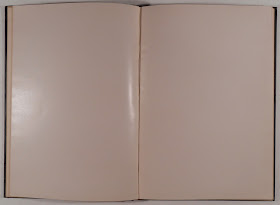 In 1911, Winston Spencer Churchill, then First Lord of the Admiralty, wrote a secret memorandum entitled Military Aspects of the Continental Problem in which he stated "a decision has been arrived at to employ a British military force on the Continent of Europe." Showcasing his "foresighted statesmanship," this document is only one of several in a small but robust collection of Churchill memorabilia given to Rauner in the 1990s by Frederick Forsch, Dartmouth Class of 1937. Forsch, a passionate collector of Churchilliana, had amassed one of the best private collections of Winston Churchill material that included letters to prime minister David Lloyd George, journalists Adam Marshall Diston and Henry Lucy, and many others as well as extensive correspondence with Admiral Sir Roger Keyes.
In 1911, Winston Spencer Churchill, then First Lord of the Admiralty, wrote a secret memorandum entitled Military Aspects of the Continental Problem in which he stated "a decision has been arrived at to employ a British military force on the Continent of Europe." Showcasing his "foresighted statesmanship," this document is only one of several in a small but robust collection of Churchill memorabilia given to Rauner in the 1990s by Frederick Forsch, Dartmouth Class of 1937. Forsch, a passionate collector of Churchilliana, had amassed one of the best private collections of Winston Churchill material that included letters to prime minister David Lloyd George, journalists Adam Marshall Diston and Henry Lucy, and many others as well as extensive correspondence with Admiral Sir Roger Keyes. Some of the letters are more personal, such as the one addressed to "Sambo," Churchill's Indian servant. In October 1899, when Churchill was twenty-four and on his way to cover the Boer War as special correspondent of the Morning Post, he responds to a request from Sambo "to come to the war" by advising him how to travel to South Africa. However, it appears that Sambo did not meet up with Churchill in the end, as there is no mention of him in any of Churchill's writings about that time.
Some of the letters are more personal, such as the one addressed to "Sambo," Churchill's Indian servant. In October 1899, when Churchill was twenty-four and on his way to cover the Boer War as special correspondent of the Morning Post, he responds to a request from Sambo "to come to the war" by advising him how to travel to South Africa. However, it appears that Sambo did not meet up with Churchill in the end, as there is no mention of him in any of Churchill's writings about that time.
Another exciting part of this collection is the pen and ink political cartoons of Winston Churchill by prominent cartoonist of the time, including Ernest H. Shepard, Sydney Strube, Edmund Dulac, David Low and Vicky, which appeared in the magazine Punch and the Morning Leader, Daily Express, Pall Mall Gazette and News Chronicle.
 A particularly good example is this cartoon by
Baron Benjamin entitled Adolf in Blunderland
which depicts Hitler as Alice, astonished at the pack
of cards bearing the names of such battles as El Alamein
and Naples rising up into the air, with Goebbels as the
knave on the left and a be-swastika'd white rabbit in the front.
The cartoon was published in the Egyptian Mail
newspaper on November 6, 1943.
A particularly good example is this cartoon by
Baron Benjamin entitled Adolf in Blunderland
which depicts Hitler as Alice, astonished at the pack
of cards bearing the names of such battles as El Alamein
and Naples rising up into the air, with Goebbels as the
knave on the left and a be-swastika'd white rabbit in the front.
The cartoon was published in the Egyptian Mail
newspaper on November 6, 1943.
 This cartoon by Ernest H. Shepard entitled Two Historians
depicts Churchill seated at a desk engaged in writing. Besides
the desk is the figure of Julius Caesar holding a volume
lettered "De Bello Gallico." It appears that Churchill
must be working on the second volume of The Second World
War, as the first volume, The Gathering Storm, is already on the shelf. The caption reads, "Do you ever wonder what a
treat this is going to be for the schoolboys of 4000 A.D.?"
This cartoon by Ernest H. Shepard entitled Two Historians
depicts Churchill seated at a desk engaged in writing. Besides
the desk is the figure of Julius Caesar holding a volume
lettered "De Bello Gallico." It appears that Churchill
must be working on the second volume of The Second World
War, as the first volume, The Gathering Storm, is already on the shelf. The caption reads, "Do you ever wonder what a
treat this is going to be for the schoolboys of 4000 A.D.?"
Another cartoon by Benjamin entitled H Bomb, for a cover of Punch magazine in 1954, depicts Churchill as Punch seated pen in hand at an easel where Uncle Sam appears on the canvas. The cartoon satirizes the fact that in the House of Commons on March 30, 1954, then Prime Minister Winston Churchill made a speech supporting the United States' development of the hydrogen bomb.
To see these and other items in the collection ask for MS-788, the Forsch collection on Winston Churchill.


